 |
| Click on figures for larger images |
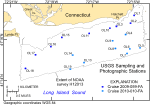 |
| Figure 15. Locations of stations at which bottom samples and photographs were taken during cruise 09059 of research vessel Rafael to verify bathymetric and backscatter data. |
Sea-floor photography was collected at 17 stations within the H12013 survey area as part of this study (fig. 15). The small Seabed Observation and Sampling System (mini-SEABOSS) system aboard the R/V Rafael was used to obtain video photography and two to five still photographs at each station as the vessels drifted over the seabed for 2 to 5 minutes. A total of 59 still photographs of the sea floor were obtained. The field of view of each image is approximately 50 cm wide (SEABOSS 50 cm above the bottom). There is no station OL12; extreme turbidity prevented photography at station OL14.
Low-resolution images (150 pixels wide) of the photographs may be viewed by browsing the thumbnails in the photo gallery below. These thumbnails are hyperlinked to medium-resolution images (600 pixels wide) for more detailed viewing. Alternatively, the directory containing the full-resolution images may be accessed by clicking here. These full-resolution images can be identified using the image name shown underneath the photograph in the galleries below. Textural analyses of samples obtained at these stations, where available, are provided in the Sediments section of this report. The photographs are listed by station and are preceded by a brief description.
| OL1 / Flat to undulating sand surrounding a small rocky outcrop. Burrows, worm and amphipod tubes, spider crabs, bushy hydrozoans, whelk egg casings, tracks, and a few scattered shells and shell debris are present in the sandy area; the outcrop is overgrown with sessile biota, including living kelp. |
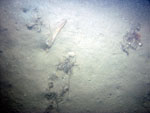
ol1_1 |

ol1_2 |
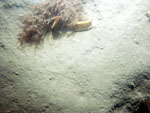
ol1_3
|
|
| OL2 / Undulating to faintly rippled sand. Scattered shells and shell hash, moon snails and casings, burrows, tracks, spider crabs, drifting organic debris (such as kelp and leaves), and whelk are present. |
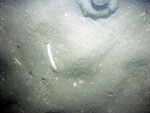
ol2_1 |
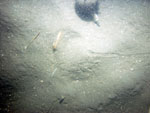
ol2_2 |
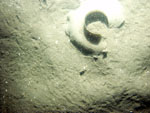
ol2_3
| |
| OL3 / Scattered boulders surrounded by patches of pebble gravel and cobbles, dense shell beds, and rippled sand. The boulders are overgrown with sessile fauna and flora, including kelp; the shell beds comprise primarily mussel valves; and the sand is burrowed. |
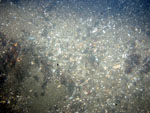
ol3_1 |
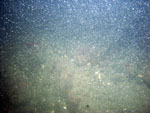
ol3_2 |
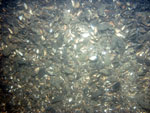
ol3_3
|
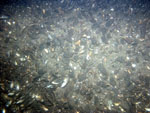
ol3_4 |
| OL4 / Current-rippled sand. Shells and shell debris are concentrated in the ripple troughs; seaweed rafted gravel, hydrozoans, and flounder are present. |
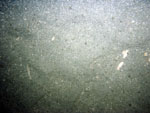
ol4_1 |

ol4_2
|
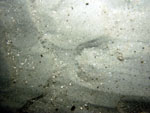
ol4_3 |
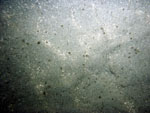
ol4_4 |
| OL5 / Current-rippled sand with some pea gravel. Scattered shells and shell debris are common but also concentrated in the ripple troughs. Scour features around larger clasts, seaweed rafted gravel, and hydrozoans are present. |
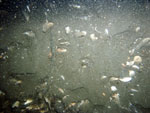
ol5_1 |
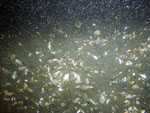
ol5_2 |
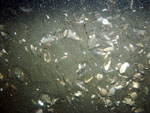
ol5_3
|
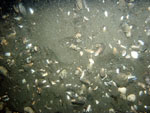
ol5_4 |
| OL6 / Current-rippled sand. Shell debris is concentrated in the ripple troughs; spider and hermit crabs are present. |
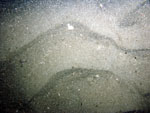
ol6_1 |
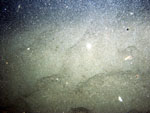
ol6_2 |
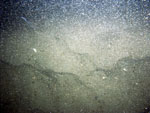
ol6_3
|

ol6_4
|
| OL7 / Boulders and bedrock surrounded by current-rippled sand. Rocks are overgrown with hydroids and sponges. Shell debris collects in the ripple troughs and patches of mussel shells, and living mussels with hydroids and hydrozoans are present. |
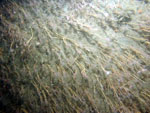
ol7_1 |
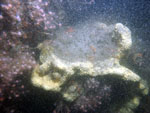
ol7_2 |
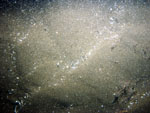
ol7_3
|
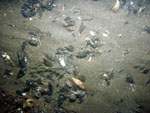
ol7_4
|
| OL8 / Boulders overgrown with sessile biota; hydroids and sponges are most common, but algae is also present. |
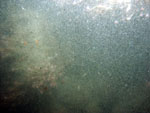
ol8_1
|
 ol8_2 ol8_2 |
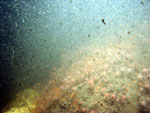
ol8_3
|
|
| OL9 / Numerous boulders surrounded by and interspaced with pebble gravel and cobbles. Boulders are overgrown with sessile biota; red seaweed and hydroids are most common, but sponges, algae, and hydrozoans are also present. |
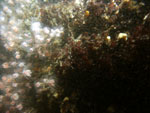
ol9_1 |
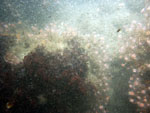
ol9_2 |
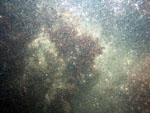
ol9_3
|
|
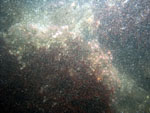
ol9_4 |

ol9_5
|
|
|
| OL10 / Faintly rippled sand with patches of pea and pebble gravel and scattered shells (primarily razor clam) and shell debris. Scour features surround many of the larger objects. Hydrozoans, burrows, spider crabs, barnacles, and moon snails are present. |
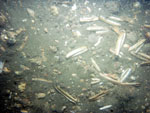
ol10_1 |
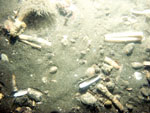
ol10_2 |
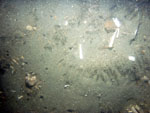
ol10_3
| |
| OL11 / Current-swept sand with dense patches of shells, scattered pebble and cobble gravel, and a muddy cohesive lithology that crops out. Shells and gravel are variably covered with barnacles; sparse burrows and worm tubes are present. |

ol11_1 |
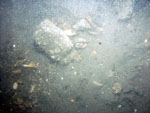
ol11_2 |
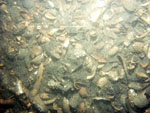
ol11_3
|
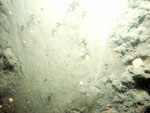
ol11_4 |
| OL13 / Current-rippled sand on sand waves. Pea and pebble gravel occurs in patches and, along with shell debris, is also concentrated in ripple troughs. Hydrozoans and moon snails are present. |
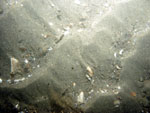
ol13_1 |
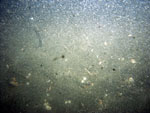
ol13_2 |
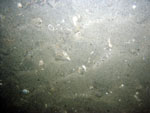
ol13_3
|
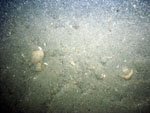
ol13_4
|
| OL14 / Current-rippled sand on megaripples. No still photography because of the extreme turbidity, presumably related to discharge from the Connecticut River. |
| OL15 / Current-rippled sand with patches of oyster shells and bushy hydrozoans. Organic debris and shell hash are concentrated in the ripple troughs; starfish and whelk are present. |
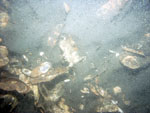
ol15_1 |
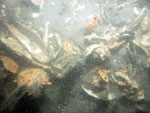
ol15_2 |
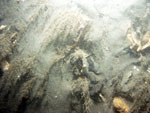
ol15_3
|
|
| OL16 / Current-rippled sand. Drifting leaf debris and seaweed, hermit crabs, and shells and shell debris are present. |
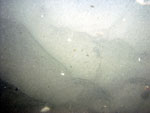
ol16_1 |
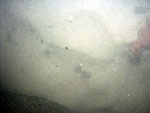
ol16_2 |
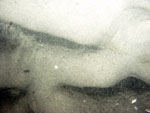
ol16_3
| |
| OL17 / Rippled sand with patches of oysters. Small burrows, worm tubes, drifting kelp, scattered shells, and some gravelly patches are present. |
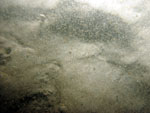
ol17_1 |
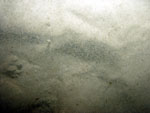
ol17_2
|
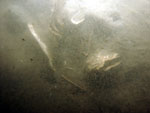
ol17_3
| |
| OL18 / Current-rippled sand with scattered shells and abundant drifting organic debris in the water column. Drifting leaf debris and seaweed, hermit crabs, and shells and shell debris are present. |
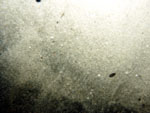
ol18_1 |
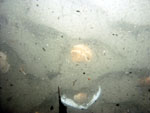
ol18_2 |
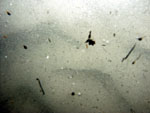
ol18_3
|
|
| OL19 / Current-rippled sand with scattered patches of pea and pebble gravel on sand waves. Some shell debris and gravel concentrated in the ripple troughs. Moon snails are present. |
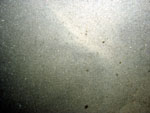
ol19_1 |
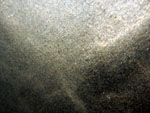
ol19_2
|
|
|
|